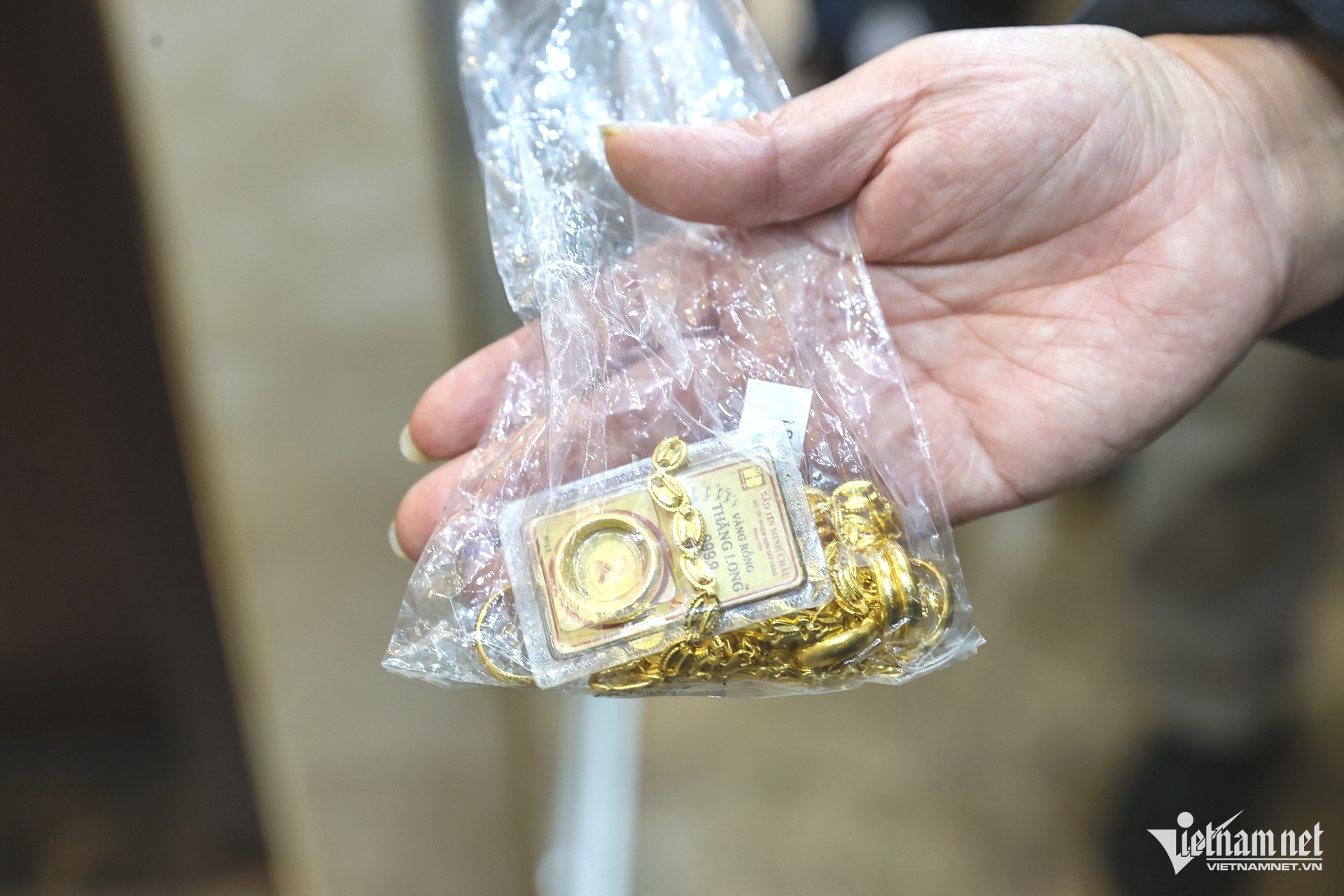
Will gold prices fall to VND 100 million per tael?
During the week of May 12–16, global gold prices dropped sharply from USD 3,300 to USD 3,204 per ounce, marking the fourth consecutive week of decline.
In Vietnam, SJC gold bars fell by VND 3 million to VND 118.5 million (approx. USD 4,660) per tael, and gold rings dropped to VND 111–114 million (USD 4,365–4,485) per tael.
However, on May 19, global prices rebounded to USD 3,210 per ounce. Domestically, SJC gold rose by VND 800,000 to VND 119.3 million (USD 4,690) per tael, and SJC gold rings climbed to VND 114.5 million (USD 4,495).
Speaking with VietNamNet, Dr. Nguyen Tri Hieu, a financial and banking expert, noted that recent dips in both domestic and global markets may be driven by positive news such as eased geopolitical tensions - particularly in the Middle East and between Russia and Ukraine - as peace talks progress.
Additionally, former U.S. President Donald Trump’s deferral of tariffs on several countries, including Vietnam, has also played a role.
He added that when prices soar, many investors take profits, putting downward pressure on the market.
Nevertheless, Dr. Hieu emphasized that these are only short-term reactions to global news and do not indicate a medium- or long-term trend.
“Domestic gold prices may fluctuate erratically alongside global movements, but the probability of dropping to VND 100 million per tael is extremely low. Even global price drops have been short-lived, driven mostly by temporary geopolitical developments.”
Structural issues remain unresolved. The U.S. Federal Reserve continues to express concern about inflation and may soon reimpose tariffs. The U.S. economy has not shown enough improvement to lift the USD Index, he explained.
In Vietnam, in addition to global influences, domestic supply constraints mean prices spike easily when demand rises.
Associate Professor Dr. Nguyen Huu Huan from the University of Economics in Ho Chi Minh City agrees that domestic prices are unlikely to dip below VND 100 million per tael in the short term.
While global instability has eased, leading to a decline in international prices, the domestic drop has been modest.
This is due to consistently strong demand for gold within Vietnam. Even during price dips, buying remains high, keeping the gap between domestic and international prices substantial.
According to Dr. Huan, the future of domestic prices hinges on global trends and local demand. If global prices continue to decline, Vietnam’s prices will follow - but accurately predicting global trends remains difficult.
“Trump’s tariff policy is unpredictable. If imposed rates are high, gold prices will spike again. Additionally, if peace talks between Russia and Ukraine collapse and conflict escalates, gold will likely surge. In short, global price movements are highly uncertain,” Dr. Huan noted.
Proposal: Let citizens earn interest on deposited gold
Recently, the Prime Minister instructed the SBV to urgently implement regulatory measures to stabilize the gold market and submit proposed amendments to Decree 24 on gold trading by June.
To stabilize the market, Dr. Hieu recommends improving supply to meet demand. He maintains that the SBV should withdraw from its role as the sole gold importer and instead issue import quotas to licensed businesses under regulatory oversight.
He also supports ending the exclusive SJC national gold brand, allowing all brands to compete on equal footing.
Dr. Huan, however, said market stabilization is challenging due to tight domestic supply. He believes importing gold is unfeasible because foreign currency reserves should be prioritized for exchange rate stability. As gold is not an essential good, it's not a priority for foreign currency allocation.
To manage the gold market, he recommends building a gold credit market. Globally, when gold markets become too volatile, some countries implement gold credit markets to meet citizens’ trading needs while preventing foreign currency outflows. Vietnam could explore this strategy, he suggested.
Dr. Huan also proposed allowing people to deposit gold at the SBV for interest, as in the past. This approach would both stabilize prices and mobilize the large quantities of gold held by the public to support economic development.
Nguyen Le